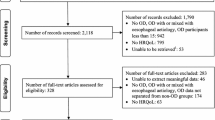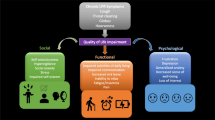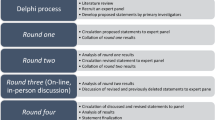Abstract
Background
The GERD-HRQL symptom severity instrument was developed and published 25 years ago. This seems like an apropos time to review how the instrument has been used in the “real-world.”
Methods
Google Scholar, PubMed, and Web of Science websites search was done using the keywords “GERD-HRQL” or its author, “Velanovich.” Once articles were identified, the following information was obtained from each article: first author name, country of origin, journal published, year of publications, type of study design, subject of study, category of study, disease type studied, purpose of the study, how the GERD-HRQL scores were reported, how the GERD-HRQL scores were statistically reported, and results of the study. The total and change of scores were analyzed for descriptive statistics based on disease process studied and intervention studied.
Results
A total of 767 articles by 562 different first authors were identified in 193 different journals from 53 different countries of study origin. After a period of steady usages, the number of publication employing the GERD-HRQL has rapidly increase over the last 5 years. There have been 8 validated translations into other languages, although there appears to be numerous, non-validated ad hoc translations. Most commonly used or studied: observational cohort study design, surgical treatment study category, GERD disease process, treatment effect study purpose, total GERD-HRQL scores reported as means or medians. However, there were a wide variety of other study designs, study categories, disease processes, and study purposes. In general, GERD and laryngopharyngeal reflux had the high pre-treatment scores (i.e., more severe symptoms), and surgical and endoscopic interventions the lowest post-treatment score (i.e., least severe symptoms) with the largest change in score (i.e., treatment impact.
Conclusions
The GERD-HRQL has proven to be a reliable, responsive and versatile symptom severity instrument for studies involving GERD as a subject.


Similar content being viewed by others
References
Velanovich V, Vallance SR, Gusz JR et al (1996) Quality of life scale for gastroesophageal reflux disease. J Am Coll Surg 183:217–224
Velanovich V (2007) The development of the GERD-HRQL symptom severity instrument. Dis Esophagus 20:130–134
Pubmed.ncbi.nlm.nih.gov, lasted Accessed January 2, 2022
eprovide.mapi-trust.org, lasted Accessed January 2, 2022
Balla A, Leone G, Ribichini E et al (2021) Gastroesophageal reflux disease-health related quality of life questionnaire: prospective development and validation in Italian. Eur J Gastroenterol Hepatol 33:339–345
Fornari F, Crubes AC, Lopes AC et al (2004) Symptom’s questionnaire for gastroesophageal reflux disease (Brazilian Portuguese). Arq Gastroenterol 41:263–267
Pereira GL, Costa CD, Geocze L et al (2007) Cross-cultural adaptation and validation for Portuguese (Brasil) of the health related quality of life instrument specific for gastroesophageal reflux disease (Brazilian Portuguese). Arq Gastroenterol 44:168–177
Ionova TJ, Nikitina TP, Mayevskaya EA et al (2020) Testing and validation of the Russian version of quality of life questionnaire in patients with GERD—GERD-HRQL (Russian). Ter Arkh 92:59–66
The 510(k) program: Evaluating substantial equivalence in premarket notifications [510(k)]. Guidance for industry and food and drug administration staff. Issued on July 28, 2014. www.fda.gov/media/82395/download, lasted Accessed March 4, 2022
Fernandez B, Dore L, Velanovich V (2017) Patient-centered outcomes in surgical research and practice. J Gastrointest Surg 21:842–895
Diniz LR, Nesi J, Curi AC, Martins W (2014) Qualitative evaluation of osteopathic manipulation therapy in a patient with gastroesophageal reflux disease: a brief report. J Am Osteopath Assoc 114:180–188
Luo Z, Hu X, Chen C et al (2020) Effect of catgut embedment in Du Meridian Acupoint on mental and psychological conditions of patients with gastroesophageal reflux disease. Evid Based Complem Alternat Med. https://doi.org/10.1155/2020/5415813
Dua KS, DeWitt JM, Kressler WR et al (2019) A phase III, multicenter, prospective, single-blinded, non-inferiority, randomized controlled trial on the performance of a novel esophageal stent with an antireflux valve (with video). Gastrointest Endosc 90(64):74.e3
Lechien JR, Debie G, Mahillon V et al (2019) A 10 year follow-up of a randomized prospective study of 2 treatments for chronic rhinosinusitis without nasal polyps and investigation of the impact of gastroesophageal reflux disease in the resistance to treatment. Ear Nose Throat J 15:145561319
Altwigry AM, Almutairi MS, Ahmed M (2017) Gastroesophageal reflux disease prevalence among schoolteachers of Saudi Arabia and its impact on their daily activities. Int J Health Sci 11:59–64
Rahimi H, Tavakol N (2018) Effects of Ramadan fasting on the symptoms of gastroesophageal reflux disease. J Nutr Fasting Health 6:213–219
Funding
This study was not funded.
Author information
Authors and Affiliations
Corresponding author
Ethics declarations
Disclosures
Vic Velanovich receives speaker honoraria from Integra LifeSciences and consulting fees from Innocoll Biotherapeutics N.A., Inc.
Additional information
Publisher's Note
Springer Nature remains neutral with regard to jurisdictional claims in published maps and institutional affiliations.
Rights and permissions
Springer Nature or its licensor holds exclusive rights to this article under a publishing agreement with the author(s) or other rightsholder(s); author self-archiving of the accepted manuscript version of this article is solely governed by the terms of such publishing agreement and applicable law.
About this article
Cite this article
Velanovich, V. 25 Years of the GERD-HRQL symptom severity instrument: an assessment of published applications. Surg Endosc 37, 255–265 (2023). https://doi.org/10.1007/s00464-022-09463-9
Received:
Accepted:
Published:
Issue Date:
DOI: https://doi.org/10.1007/s00464-022-09463-9




